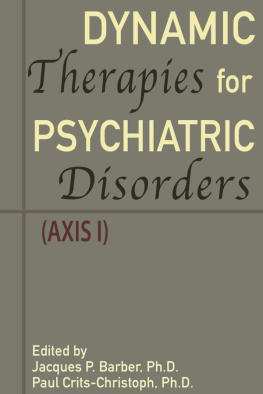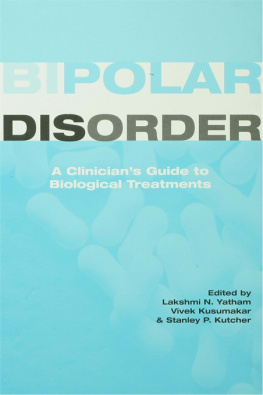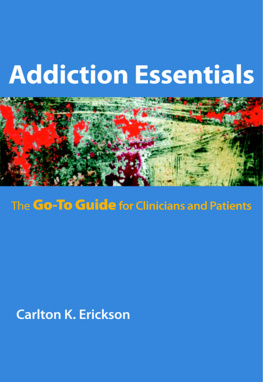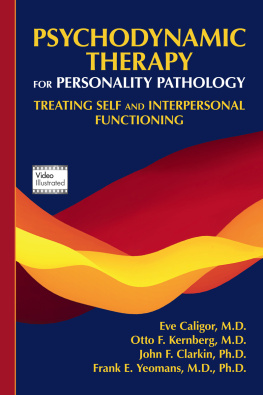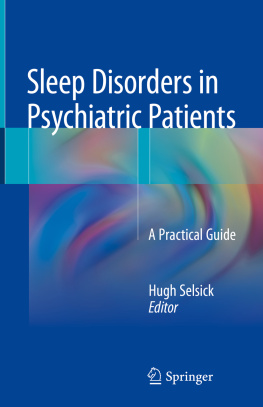Jacques P. Barber - Dynamic Therapies For Psychiatric Disorders (axis I)
Here you can read online Jacques P. Barber - Dynamic Therapies For Psychiatric Disorders (axis I) full text of the book (entire story) in english for free. Download pdf and epub, get meaning, cover and reviews about this ebook. year: 1995, publisher: Basic Books, genre: Home and family. Description of the work, (preface) as well as reviews are available. Best literature library LitArk.com created for fans of good reading and offers a wide selection of genres:
Romance novel
Science fiction
Adventure
Detective
Science
History
Home and family
Prose
Art
Politics
Computer
Non-fiction
Religion
Business
Children
Humor
Choose a favorite category and find really read worthwhile books. Enjoy immersion in the world of imagination, feel the emotions of the characters or learn something new for yourself, make an fascinating discovery.
- Book:Dynamic Therapies For Psychiatric Disorders (axis I)
- Author:
- Publisher:Basic Books
- Genre:
- Year:1995
- Rating:4 / 5
- Favourites:Add to favourites
- Your mark:
- 80
- 1
- 2
- 3
- 4
- 5
Dynamic Therapies For Psychiatric Disorders (axis I): summary, description and annotation
We offer to read an annotation, description, summary or preface (depends on what the author of the book "Dynamic Therapies For Psychiatric Disorders (axis I)" wrote himself). If you haven't found the necessary information about the book — write in the comments, we will try to find it.
Dynamic Therapies For Psychiatric Disorders (axis I) — read online for free the complete book (whole text) full work
Below is the text of the book, divided by pages. System saving the place of the last page read, allows you to conveniently read the book "Dynamic Therapies For Psychiatric Disorders (axis I)" online for free, without having to search again every time where you left off. Put a bookmark, and you can go to the page where you finished reading at any time.
Font size:
Interval:
Bookmark:
Dynamic Therapies for Psychiatric Disorders (Axis I)
Jacques P. Barber & Paul Crits-Christoph
e-Book 2016 International Psychotherapy Institute
All Rights Reserved
This e-book contains material protected under International and Federal Copyright Laws and Treaties. This e-book is intended for personal use only. Any unauthorized reprint or use of this material is prohibited. No part of this book may be used in any commercial manner without express permission of the author. Scholarly use of quotations must have proper attribution to the published work. This work may not be deconstructed, reverse engineered or reproduced in any other format.
Created in the United States of America
For information regarding this book, contact the publisher:
International Psychotherapy Institute E-Books
301-215-7377
6612 Kennedy Drive
Chevy Chase, MD 20815-6504
www.freepsychotherapybooks.org
Copyright 1995 Jacques P. Barber & Paul Crits-Christoph
To our children Natalie and Adam, and Alexander, Avery, andNicholas who are going to live in a world that will change even faster than theone we have known
Jacques P. Barber, PH.D.
Assistant Professor, Center for Psychotherapy Research, Department ofPsychiatry, University of Pennsylvania
John Cacciola, PH.D.
Research Assistant Professor, Department of Psychiatry, University of PennsylvaniaMedical School
Katherine Crits-Christoph, PH.D.
Private Practice, Philadelphia; Clinical Assistant Professor, Center forPsychotherapy Research, Department of Psychiatry, University of PennsylvaniaMedical School
Paul Crits-Christoph, PH.D.
Associate Professor and Director, Center for Psychotherapy Research, Departmentof Psychiatry, University of Pennsylvania Medical School
Marylene Cloitre, PH.D.
Director of Psychology Training, Payne Whitney Clinic, Cornell Medical School
Peter L. DeRoche, M.D., C.C.F.P., F.R.C.P.(C)
Assistant Professor, Department of Psychiatry, University of Toronto; Director,Clinic for HIV-Related Concerns, Mount Sinai Hospital, Toronto
Tracy D. Eells, PH.D.
Assistant Professor, Department of Psychiatry and Behavioral Sciences, Universityof Louisville
Jeffrey Faude, PH.D.
Private Practice, Philadelphia; Consultant, Center for Psychotherapy Research,Department of Psychiatry, University of Pennsylvania Medical School
Margaret Fichter, PH.D.
Lecturer, Department of Psychiatry, University of Pennsylvania Medical School
Louise Gaston, PH.D.
Assistant Professor, Department of Psychiatry, McGill University; Director,TRAUMATYS, Psychological Services Inc.
Barbara Goldsmith, PSY.D..
Private Practice, Philadelphia
LEORA HECKELMAN, PH.D.
Supervising Psychologist, Department of Psychiatry, Roosevelt Hospital, NewYork
Anita V. Hole, PH.D.
Clinical Assistant Professor of Psychology, Department of Psychiatry,University of Pennsylvania Medical School
Craig L. Johnson, PH.D.
Director of Psychology and Director, Eating Disorders Program, LaureatePsychiatric Clinic and Hospital, Tulsa
Bertram P. Karon, PH.D.
Professor, Department of Psychology, Michigan State University
Richard P. Kluft, M.D.
Clinical Professor of Psychiatry, Temple University School of Medicine;Director, Dissociative Disorders Program, the Institute of PennsylvaniaHospital, Philadelphia
Jerome D. Levin, PH.D.
Director, Alcoholism Counselor Training Program, New School for SocialResearch, New York
Lester Luborsky, PH.D.
Emeritus Professor of Psychology in Psychiatry, Center for PsychotherapyResearch, Department of Psychiatry, University of Pennsylvania Medical School
David Mark, PH.D.
Private Practice, Philadelphia; Senior Supervisor, Center for PsychotherapyResearch, Department of Psychiatry, University of Pennsylvania Medical School
Jennifer Q. Morse
Research Assistant, Center for Psychotherapy Research, Department ofPsychiatry, University of Pennsylvania Medical School
Carol Popp, m.d., PH.D.
Assistant Professor, Department of Radiology, Emory University
David Rudick, PH.D.
Private Practice, Philadelphia
Randy A. Sansone, M.D.
Associate Professor and Medical Director, Psychiatry Outpatient Clinic,Department of Psychiatry, University of Oklahoma College of Medicine, Tulsa
M. Katherine Shear, M.D.
Associate Professor of Psychiatry, Western Psychiatric Institute and Clinic,University of Pittsburgh Medical Center
Michael A. Teixeira, PH.D.
Private Practice, Lansing; Visiting Assistant Professor, Department ofPsychology, Michigan State University
Anthony Velleco, PH.D.
U.S. Behavioral Health, Philadelphia
Donna Wolf-Palacio, M.S.W.
Private Practice, Philadelphia
George E. Woody, M.D.
Clinical Professor, Department of Psychiatry, University of PennsylvaniaMedical School
Our interest in collecting treatment guidelines for the dynamictherapy of patients with specific diagnoses grew out of our collaborative workas part of the University of Pennsylvania Center for Psychotherapy Research, aclinical research center for the study of psychotherapy funded by the NationalInstitute of Mental Health. Our center's primary aim is to develop and evaluatethe efficacy of psychotherapies tailored to specific populations. In regard todynamic therapies, we were aware of a variety of other clinicians and clinicalresearchers who had also begun the process of tailoring some version of dynamictherapy to a specific population; out of this context the present book emerged.
Financial support was provided in part by grants from the NationalInstitute of Mental Health, the National Institute of Drug Abuse, and from theNational Institute of Mental Health Clinical Research Center. We would like tothank Jo Ann Miller, Steven Francoeur, and Michael Wilde from Basic Books fortheir patience and for their help in completing this book.
CHAPTER 1
Jacques P. Barber, Paul Crits-Christoph, andJennifer Q. Morse
This chapter presents briefly the background and rationale for whatthe book intends to achieve. Developments in psychotherapy research andpractice as well as changes in the patterns of delivery and reimbursement formental health care have led us to conclude, along with many others, thatpsychodynamic psychotherapy is in a precarious situation. What follows are therecent developments responsible for our concerns.
With the emergence of managed health care, such as healthmaintenance organizations (HMOs), and caps on reimbursement for inpatient andoutpatient care, psychotherapists have become more aware of the importance ofbeing recognized by the health alliances as providing a worthwhile,cost-effective service. In general, HMOs and similar managed care organizationsprovide their patients with a small number of low-fee therapy sessions. Theaims of the treatment are mostly targeted at alleviating symptomatic discomfort.It seems more than likely that the emphasis on specific disorders or onspecific symptoms will continue and that therapists will be encouraged to usetreatments that have been shown empirically to be effective for those disordersand symptoms.
There is consensus that psychotherapy in general appears to beeffective (e.g., Smith & Glass, 1977); thus, the general question ofeffectiveness is no longer seen as relevant. Instead, the question has become,"What treatments are effective for what types of patients?" Alongthese lines, researchers on cognitive and behavioral treatments have shown thatbrief therapies can be effective for specific disorders. As an example,cognitive therapy (CT) (Beck, Rush, Shaw, & Emery, 1979) has beenrepeatedly shown to be effective for depression (Dobson, 1989), panic disorders(Clark, Salkovskis, Hackmann, Middleton, Anastasiades, & Gelder, 1991), andopiate addiction (Woody et al., 1983). In fact, CT is as effective aspharmacotherapy in treating depression (see, e.g., Beck, 1993, and Dobson,1989, for reviews) and may be better than medication at preventing relapse(Barber & DeRubeis, 1989). Such efficacy research has already resulted inkey organizations recommending that treatments whose effectiveness has beenempirically demonstrated be the treatments of choice. However, theinterpretation of the research literature by such organizations may be open toquestion. For example, despite the demonstrated efficacy of CT for depression(Dobson, 1989), the American Psychiatric Association (1993) recommends the useof CT for mild to moderate depression only. Although empirical evidence may notalways be sufficient to convince different policy-making groups of the efficacyof any form of psychotherapy, we cannot envision convincing those groupswithout such evidence.
Next pageFont size:
Interval:
Bookmark:
Similar books «Dynamic Therapies For Psychiatric Disorders (axis I)»
Look at similar books to Dynamic Therapies For Psychiatric Disorders (axis I). We have selected literature similar in name and meaning in the hope of providing readers with more options to find new, interesting, not yet read works.
Discussion, reviews of the book Dynamic Therapies For Psychiatric Disorders (axis I) and just readers' own opinions. Leave your comments, write what you think about the work, its meaning or the main characters. Specify what exactly you liked and what you didn't like, and why you think so.

